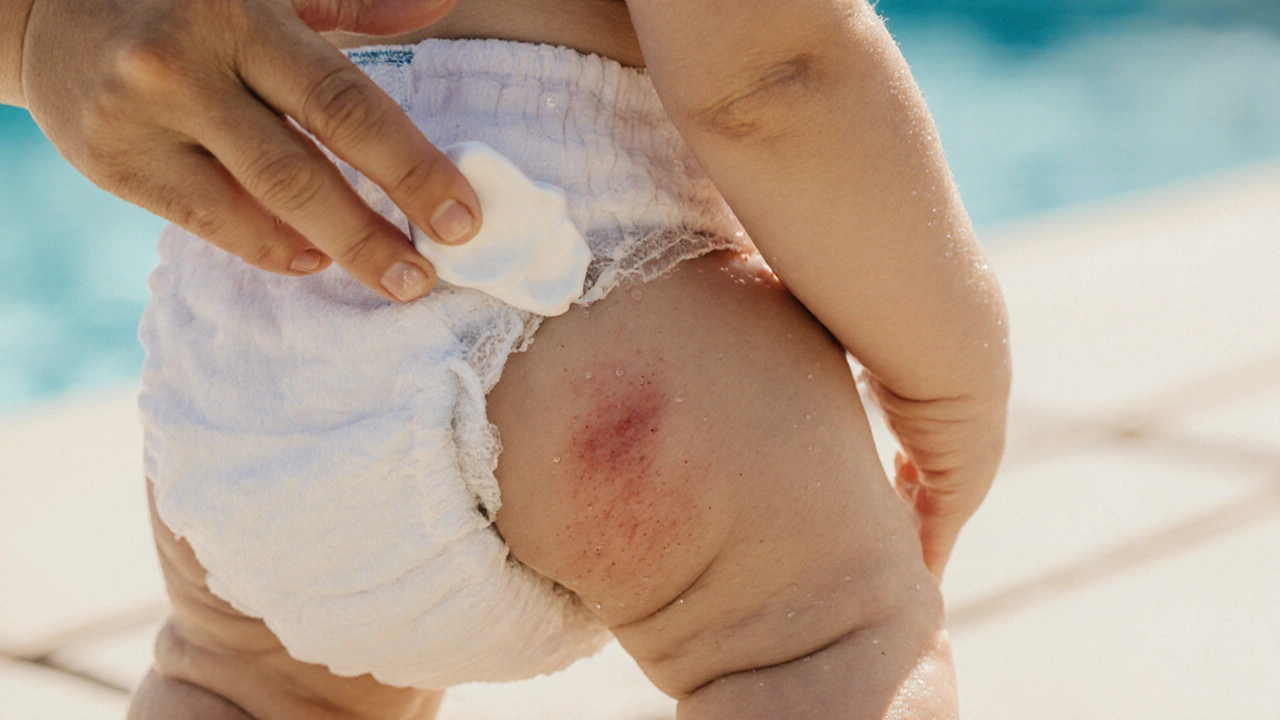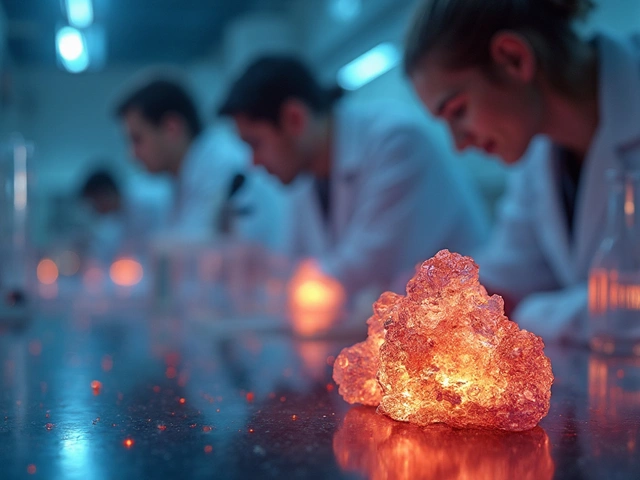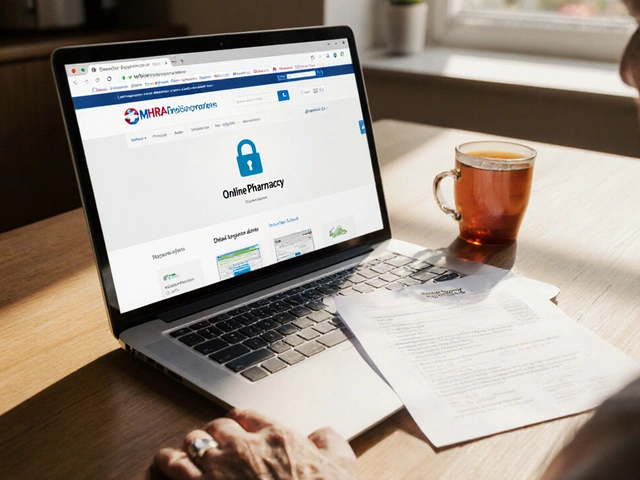Quick Take
- diaper rash can flare up after swimming, but proper prep keeps baby comfy.
- Check pool water quality and limit swim time to 20‑30 minutes.
- Apply a water‑proof barrier ointment before the dip, and re‑apply after.
- Watch for signs of yeast or bacterial infection - they need different treatment.
- If irritation persists more than 24‑48 hours, call your paediatrician.
What Is Diaper Rash, Anyway?
When you hear diaper rash is an inflammation of the skin underneath a baby’s diaper caused by moisture, friction, and irritants, you probably picture red patches and a cranky infant. In reality, there are several flavours of rash, each with its own trigger and treatment plan. Understanding the basics helps you spot the difference between a harmless heat rash and a more serious yeast infection.
How Does Swimming Change the Equation?
Jumping into a pool might look like a fun break for you and a cool splash for baby, but water brings extra variables. Chlorinated water, for instance, can strip natural oils from delicate skin, while warm temperatures increase sweating and prolong dampness. On the flip side, fresh‑water lakes and hot tubs add bacteria and possibly algae that love the warm, moist environment of a diaper.
Here’s a quick rundown of the main ways swimming interacts with baby skin:
- Chlorinated pool water lowers the skin’s pH and dries out the protective acid mantle, making it easier for irritants to penetrate.
- Prolonged exposure keeps the diaper area wet, which is a prime breeding ground for yeast Candida albicans and bacteria.
- Waterlogged diapers increase friction, especially if the diaper swells and rides up.
- Public pools may have higher bacterial loads; even a quick dip can introduce Staphylococcus aureus a common cause of bacterial diaper rash.
Pre‑Swim Checklist: Keep the Rash at Bay
Think of this as a pre‑flight safety routine. Follow each step, and you’ll drastically cut the chance of a rash flare‑up.
- **Pick the right diaper** - Choose a waterproof, breathable option that fits snugly without being too tight. Avoid cloth diapers that stay damp longer.
- **Apply a water‑proof barrier** - Use a petroleum‑based ointment or a silicone‑based cream classified as a barrier ointment creates a protective film that resists water. Put a thin layer on the clean, dry skin before dressing.
- **Check the pool’s chlorine level** - Ideal free‑chlorine is between 1.0‑3.0ppm. Too low means more bacteria; too high means more skin irritation.
- **Limit swim time** - Aim for 20‑30 minutes for infants, then dry them off promptly.
- **Change diapers immediately after** - Remove wet diapers, clean with a mild, fragrance‑free wipe, and pat dry. Re‑apply barrier ointment before the next diaper.
Spotting the Different Types of Rash
| Type | Typical Cause | Appearance | Usual Onset | First‑Line Treatment |
|---|---|---|---|---|
| Irritant | Moisture, friction, chlorine | Red, raw patches, sometimes papules | Hours‑to‑days after wet diaper | Barrier cream, frequent changes, air time |
| Yeast (Candida) | Warm, moist environment; antibiotics | Bright red with satellite lesions | 2‑5 days, often after swimming | Antifungal ointment (nystatin) |
| Bacterial | Staph or Streptococcus exposure | Red, swollen, may ooze pus | 24‑48hrs, quickly spreads | Antibiotic prescribed by doctor |

When to Call the Doctor
Most mild rashes calm down with the steps above, but certain red flags mean professional care is needed:
- Fever higher than 38°C (100.4°F).
- Rash spreading beyond the diaper area.
- Bleeding, pus, or foul odor.
- Rash lasting more than 48hours despite treatment.
- Baby seems unusually irritable or refuses feeds.
These signs could indicate an infection that requires prescription medication.
Common Mistakes Parents Make
Even seasoned parents slip up. Here are the top blunders and how to avoid them:
- **Skipping the post‑swim diaper change** - Wet skin equals irritation. Change within five minutes.
- **Using scented wipes or soaps** - Fragrances disrupt the skin’s natural barrier.
- **Over‑applying ointment** - A thick layer can trap moisture, doing the opposite of protection.
- **Re‑using a diaper after a quick rinse** - Even a brief dip can leave enough water to soften the adhesive, causing leaks and more wetness.
- **Relying on “natural” remedies alone** - While aloe or oatmeal baths soothe, they don’t replace a proper barrier or antifungal treatment when needed.
Quick FAQ for Busy Parents
Frequently Asked Questions
Can I let my baby swim with a mild diaper rash?
If the rash is just a tiny spot and there’s no open skin, a short, supervised swim is okay. Apply a barrier cream first, keep the session under 20minutes, and change the diaper right after.
Do chlorine tablets make diaper rash worse?
Yes. High chlorine levels strip the skin’s natural oils and can aggravate irritation. Ask the pool manager about the current ppm and aim for a range between 1‑3ppm.
What’s the best diaper cream for swimmers?
A petroleum‑based ointment (e.g., white petroleum jelly) or a silicone‑based cream works best because they’re water‑resistant and form a solid barrier.
How can I tell if it’s a yeast infection?
Yeast rashes are bright red with tiny satellite spots spreading outward. They often appear after a few days of warm, wet conditions. Antifungal treatment is required.
Is it safe to use baby powder after swimming?
Avoid talc‑based powders; they can be inhaled. If you want a dry feel, choose a cornstarch‑based powder sparingly, but it’s not a substitute for a proper barrier cream.
Bottom Line
Swimming with a baby doesn’t have to mean a battle with diaper rash. By checking pool chemistry, using a water‑proof barrier, and staying on top of diaper changes, you protect your little one’s delicate skin while still enjoying splash time. Keep an eye out for signs of yeast or bacterial infection, and don’t hesitate to get medical help if anything feels off. With a little preparation, the pool can be a happy, healthy place for both parent and child.






Comments
Helena Pearson
28/Sep/2025Hey there! 👋 Swimming with a little one can feel like a high‑stakes adventure, but you’ve nailed the basics with that checklist. 🎯 I love the reminder to pick a waterproof, breathable diaper – the combo of snug‑fit and breathability is a game‑changer. 🌊 Don’t forget to pat the skin dry gently before re‑applying that barrier ointment; a little extra TLC goes a long way. And if you ever spot those sneaky satellite spots, a quick antifungal cream can save the day. Keep those splash sessions fun and rash‑free! 😊
Patricia Fallbeck
28/Sep/2025Oh, please! As if a simple barrier cream could possibly shield a baby from the chemical apocalypse of chlorinated pools. 🌪️ Who needs “quick dip” advice when the very act of swimming is a near‑taxing insult to delicate epidermis? 🙄 The article glosses over the fact that chlorine is practically a corrosive agent; better to stay on dry land and avoid the whole fiasco. 😈
Brett Snyder
28/Sep/2025Dis is a real problem. If u dont check chlorine lvl u risk infection. Stop ignore the data and use proper barrier!
Nidhi Jaiswal
28/Sep/2025The key is to change diapers right after swim and keep skin dry. Also watch chlorine level between 1 and 3 ppm.
Sunil Sharma
28/Sep/2025Hey folks, just wanted to add that using a silicone‑based cream can be a solid alternative to petroleum jelly if you’re looking for something that feels less greasy. It still creates a water‑proof shield and tends to stay put longer during those post‑pool diaper changes. Also, a quick rinse of the baby with lukewarm water before the barrier helps the product bond better. Keep it simple and enjoy the water!
Leah Robinson
28/Sep/2025Loving these tips! 😎 The barrier cream hack is a lifesaver and the 20‑minute limit is spot on. Keep spreading the good vibes and dry diapers! 🌟
Abhimanyu Lala
28/Sep/2025Pool time? More like rash time if u skip the cream.
Richard Sucgang
28/Sep/2025While brevity is commendable, the statement overlooks the nuanced interplay between barrier ointments, water exposure duration, and skin microbiome balance. A more comprehensive remark would acknowledge that omitting a proper water‑resistant barrier can indeed predispose an infant to irritant dermatitis, especially in chlorinated environments.
Russell Martin
28/Sep/2025Quick tip: keep a small pack of barrier ointment in your swim bag so you never forget to re‑apply after the pool.
Jenn Zee
28/Sep/2025Swimming with a baby is a wonderful bonding experience that many parents cherish. However, the reality of diaper rash in the pool is often underestimated. The article provides a solid foundation, yet it could delve deeper into the microbiological aspects of the pool environment. For instance, the presence of Staphylococcus aureus in public pools can exacerbate irritant rashes, turning a mild red patch into a painful infection. Moreover, chlorine, while essential for sanitation, disrupts the skin's natural pH balance, stripping away protective lipids that keep the diaper area supple. This chemical assault is compounded when a diaper becomes water‑logged, creating a perfect incubator for Candida albicans. Parents should also be aware that not all barrier creams are created equal; petroleum‑based ointments form a more occlusive seal than many silicone alternatives. Yet, silicone‑based products can be advantageous for those who dislike the greasy feel of petroleum jelly. The timing of diaper changes is another critical factor-changing within five minutes of exiting the pool can prevent prolonged moisture exposure. Additionally, rinsing the infant with lukewarm, fresh water before applying any ointment helps to remove residual chlorine that might otherwise weaken the barrier. It is equally important to monitor the infant for subtle signs of infection, such as a sudden increase in fussiness or a low‑grade fever. Should these symptoms arise, seeking pediatric guidance promptly can avert more serious complications. Finally, parents might consider investing in swim‑specific diapers that offer enhanced waterproofing while maintaining breathability. These specialized diapers often feature a tighter fit that reduces friction and prevents the diaper from riding up during vigorous splashing. In summary, a combination of attentive care, appropriate product selection, and diligent monitoring creates the safest swimming environment for both baby and parent alike.
don hammond
28/Sep/2025Oh sure, because nothing screams “relaxing family day” like turning your baby into a mini lab rat for chlorine exposure. 🤦♂️ Maybe next time just bring a rubber duck and call it a day. 😂
Ben Rudolph
28/Sep/2025Agree, keep it simple.
Ian Banson
28/Sep/2025Honestly, this whole thing is overblown. If you’re smart enough to pick a good pool, you don’t need all this fuss. Just use common sense and move on.
marcel lux
28/Sep/2025While I respect the viewpoint, it’s prudent to acknowledge that even well‑maintained pools can pose risks, and a balanced approach-combining vigilance with practicality-serves most families best.
Charlotte Shurley
28/Sep/2025Thanks for sharing these practical tips; they’ll be useful for many parents planning swim outings.